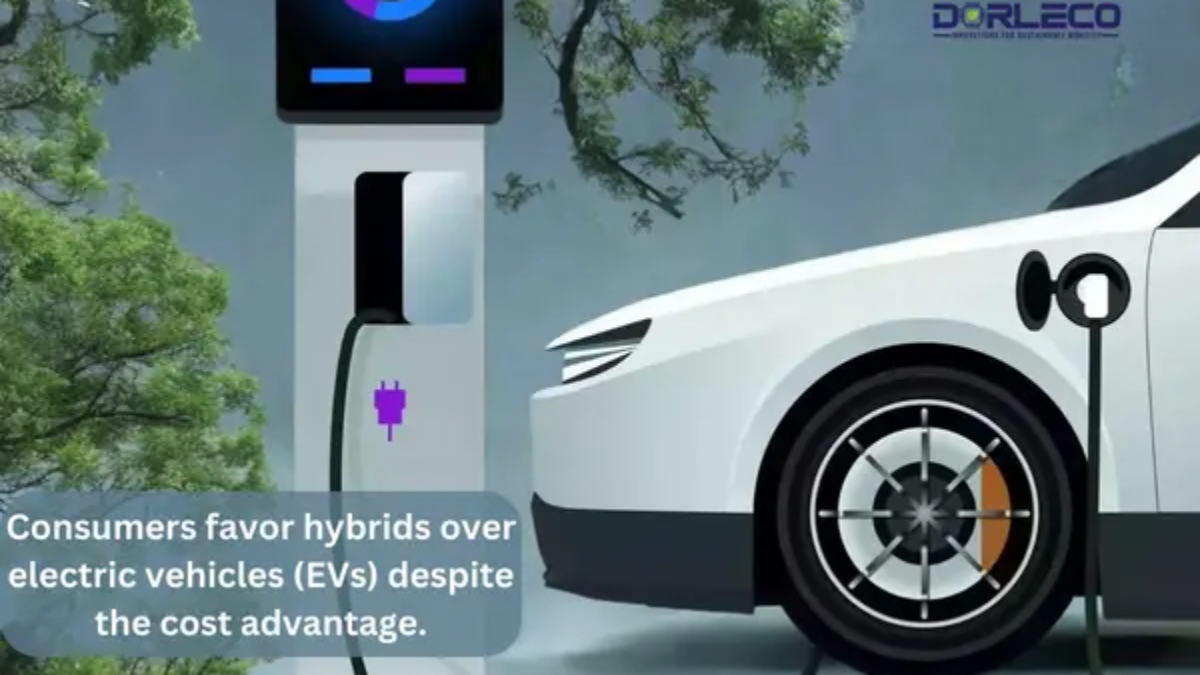Even though EVs are subsidized by both the federal and state governments, which has allowed manufacturers to lower their prices relative to hybrids, consumers are increasingly inclined to purchase hybrids rather than fully electric vehicles with batteries. Even yet, hybrids are more expensive than EVs.
Consumers favor hybrids over electric vehicles
Mumbai: Although hybrid cars are more expensive than electric ones, more consumers want to choose hybrids as their next vehicle, per a report. According to Deloitte’s 2024 Global Automotive Consumer Study, factors including charging time, the availability of charging infrastructure, and battery technology safety continue to limit the rapid adoption of BEVs (battery electric vehicles).
36% of respondents in 2024, up from 32% in 2023, stated they would rather drive PHEVs or hybrids, while 10% preferred BEVs. The percentage of people who choose hybrids has increased by 4 percentage points from 2023 to the current year, twice as much as those who are likely to choose electric vehicles. Additionally, the desire to purchase a non-traditional engine car is increasing overall, rising from 49% in 2023 to 53% in 2024 over gasoline and diesel.
The preference for hybrids over electric vehicles is becoming more evident, even though EVs are now enjoying state and federal government subsidies that enable manufacturers to offer them at a lower cost than hybrids. Even yet, hybrids are more expensive than EVs. “Due to the peace of mind that hybrids provide that electric vehicles cannot,” states Rajeev Singh, partner and consumer sector leader at Deloitte Asia Pacific. “People want to buy hybrids over electric vehicles.”
In plug-in hybrid electric vehicles (PHEVs), an internal combustion engine (ICE) is powered by gasoline or diesel while an electric motor is powered by batteries. Regenerative braking, an ICE, wall outlets, and charging equipment can all be used to charge PHEVs.
“For a market like India, where charging infrastructure is still underdeveloped, the government should at least incentivize PHEVs which offer benefits similar to an EV-can be charged at home and can be switched to the ICE mode in the event of the vehicle running out of charge. In fact, because of the legislative emphasis on EVs, the majority of automakers—aside from the Japanese—are relying solely on EVs to reach carbon reduction targets.
Toyota, Suzuki, and Honda are three Japanese automakers that use several powertrains and have been requesting subsidies to lower the cost of hybrid vehicles. According to industry projections, the percentage of hybrid vehicles will rise from 0.5% in 2022 to 2% in 2023 thanks to incentives that have persisted even in the absence of government support. These incentives have enabled manufacturers to introduce more reasonably priced hybrid models. Hybrid subsidies are opposed by domestic automakers like Mahindra and Tata Motors, who have been making significant investments in electric vehicles.
The Deloitte survey also reveals that people planning to buy an EV aren’t willing to pay much more than those planning to buy an ICE car; 27% of respondents who planned to buy an ICE car stated they would be willing to spend between Rs.15 Lakh and Rs.25 lakh. The percentage of respondents who plan to purchase an EV was only 2% points higher. Singh noted that the current trend contrasts with a market such as Japan, where buyers of electric vehicles are prepared to spend a higher price on these vehicles due to their superior affordability and environmental concern.

